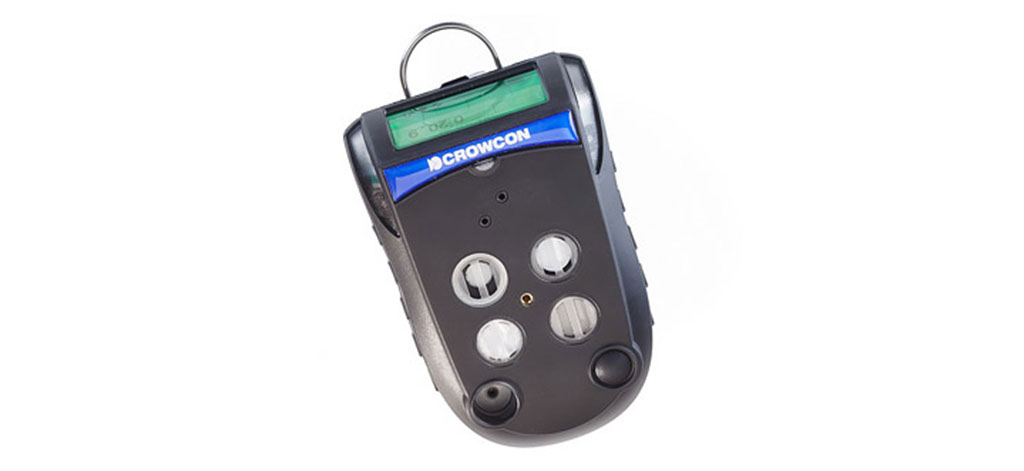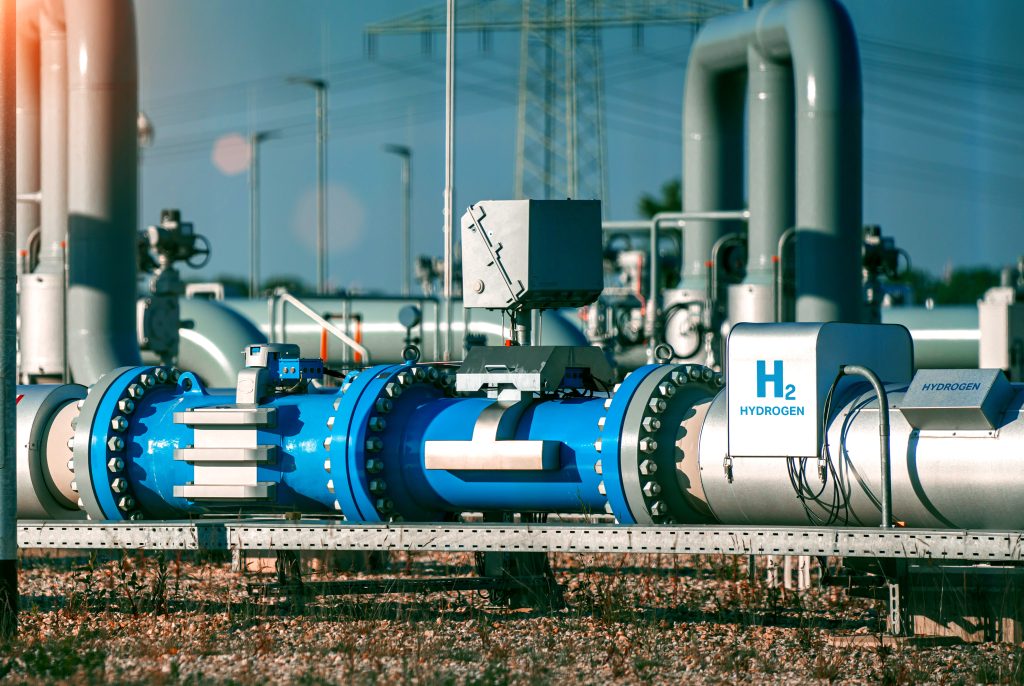Gas-Pro El monitor portátil de doble rango TK (rebautizado como Tank-Pro) mide la concentración de gas inflamable en tanques inertizados. Disponible para metano, butano y propano, Gas-Pro TK utiliza un sensor de gas inflamable IR dual, la mejor tecnología para este entorno especializado. Gas-Pro El IR dual TK dispone de cambio automático de rango entre la medición de %vol. y %LEL, para garantizar el funcionamiento en el rango de medición correcto. Esta tecnología no se ve dañada por las altas concentraciones de hidrocarburos y no necesita concentraciones de oxígeno para funcionar, como son los factores limitantes de los pellistores/perlas catalíticas en estos entornos.
¿Qué problema pretende resolver Gas-Pro TK?
Cuando desee entrar en un depósito de almacenamiento de combustible para inspeccionarlo o realizar tareas de mantenimiento, puede empezar con él lleno de gas inflamable. No puede simplemente empezar a bombear aire para desplazar el gas inflamable porque en algún momento de la transición de sólo combustible presente a sólo aire presente, se produciría una mezcla explosiva de combustible y aire. En su lugar, debe bombear un gas inerte, normalmente nitrógeno, para desplazar el combustible sin introducir oxígeno. La transición de 100% de gas inflamable y 0% de volumen de nitrógeno, a 0% de volumen de gas inflamable y 100% de nitrógeno permite una transición segura de 100% de nitrógeno a aire. El uso de este proceso de dos pasos permite una transición segura de combustible a aire sin riesgo de explosión.
Durante este proceso no hay aire ni oxígeno presentes, por lo que los sensores de perlas catalíticas / pellistores no funcionarán correctamente y además se intoxicarán por los altos niveles de gas inflamable. El sensor IR de doble rango utilizado por Gas-Pro TK no necesita aire ni oxígeno para funcionar, por lo que es ideal para supervisar todo el proceso, desde las concentraciones de %volumen hasta las de %LEL, a la vez que supervisa los niveles de oxígeno en el mismo entorno.
¿Qué es el LEL?
El límite inferior de explosividad (LIE) es la concentración más baja de un gas o vapor que arderá en el aire. Las lecturas son un porcentaje de ese valor, siendo el LIE del 100% la cantidad mínima de gas necesaria para arder. El LIE varía de un gas a otro, pero para la mayoría de los gases inflamables es inferior al 5% en volumen. Esto significa que se necesita una concentración relativamente baja de gas o vapor para producir un alto riesgo de explosión.
Para que se produzca una explosión deben estar presentes tres elementos: gas combustible (el combustible), aire y una fuente de ignición (como se muestra en el diagrama). Además, el combustible debe estar presente en la concentración adecuada, entre el Límite Inferior de Explosividad (LIE), por debajo del cual la mezcla de gas y aire es demasiado pobre para arder, y el Límite Superior de Explosividad (LSE), por encima del cual la mezcla es demasiado rica y no hay suficiente suministro de oxígeno para mantener una llama.
En general, los procedimientos de seguridad se ocupan de detectar los gases inflamables mucho antes de que alcancen una concentración explosiva, por lo que los sistemas de detección de gases y los monitores portátiles están diseñados para iniciar alarmas antes de que los gases o vapores alcancen el Límite Inferior de Explosividad. Los umbrales específicos varían en función de la aplicación, pero la primera alarma suele fijarse en el 20% de LIE y otra alarma suele fijarse en el 40% de LIE. Los niveles de LIE se definen en las siguientes normas: ISO10156 (también referenciada en EN50054, que ha sido sustituida) e IEC60079.
¿Qué es %Volumen?
La escala de porcentaje por volumen se utiliza para indicar la concentración de un tipo de gas en una mezcla de gases como porcentaje del volumen de gas presente. Se trata simplemente de una escala diferente en la que, por ejemplo, la concentración del límite inferior de explosividad del metano se muestra en el 4,4% del volumen en lugar del 100% LEL o 44000ppm, que son equivalentes. Si hubiera un 5% o más de metano presente en el aire, tendríamos una situación altamente peligrosa en la que cualquier chispa o superficie caliente podría provocar una explosión en presencia de aire (concretamente oxígeno). Si la lectura es del 100% del volumen, significa que no hay ningún otro gas presente en la mezcla de gases.
Gas-Pro TK
Nuestra Gas-Pro TKha sido diseñado para su uso en entornos especializados de tanques inertizados para controlar los niveles de gases inflamables y oxígeno, ya que los detectores de gas estándar no funcionan. En "Modo de comprobación de depósitos", nuestro Gas-Pro TKes adecuado para aplicaciones especializadas de supervisión de espacios de tanques inertizados durante la purga o la liberación de gases, además de servir como monitor personal de seguridad de gases en funcionamiento normal. Permite a los usuarios controlar la mezcla de gases en tanques que transportan gases inflamables durante el transporte marítimo (ya que está homologado para uso marítimo) o en tierra, como petroleros y terminales de almacenamiento de petróleo. Con un peso de 340 g,Gas-Pro TK es hasta seis veces más ligero que otros monitores para esta aplicación; una ventaja si tiene que llevarlo consigo todo el día.
En el modo Tank Check, el CrowconGas-Pro TK, supervisa las concentraciones de gas inflamable y oxígeno, comprobando que no se esté desarrollando una mezcla insegura. El dispositivo cambia automáticamente entre %vol y %LEL según lo exija la concentración de gas, sin intervención manual, y notifica al usuario cuando esto ocurre. Gas-Pro El TK muestra en su pantalla las concentraciones de oxígeno en tiempo real desde el interior del depósito, por lo que los usuarios pueden realizar un seguimiento de los niveles de oxígeno, ya sea para cuando los niveles de oxígeno son lo suficientemente bajos como para cargar y almacenar combustible de forma segura, o lo suficientemente altos como para entrar en el depósito de forma segura durante el mantenimiento.
EnGas-Pro TKestá disponible calibrado para metano, propano o butano.Con protección IP65 e IP67, Gas-Pro TK satisface las exigencias de la mayoría de los entornos industriales. Con certificaciones MED opcionales, es una valiosa herramienta para la supervisión de tanques a bordo de buques. La adición opcional del sensor de alto H₂S permite a los usuarios analizar el posible riesgo si los gases se ventilan durante la purga. Con esta opción, los usuarios pueden supervisar en el intervalo de 0-100 o 0-1000 ppm.
Nota: si el combustible del depósito es hidrógeno o amoníaco, se requiere una técnica de detección de gases diferente y debe ponerse en contacto con Crowcon.
Para más información sobre nuestro Gas-Pro TK visite nuestra página de productos o póngase en contacto con nuestro equipo.
VISIÓN DEL SECTOR
Suscríbase para recibir las últimas novedades de
en su buzón de entrada.
Información sobre Crowcon Privacidad y Política de cookies. Si cambia de opinión, puede darse de baja en cualquier momento






